






of







of







of





















Shusha Castle implies the castle walls embracing the Shusha city of Azerbaijan. The Castle defended the city against the foreign invasions, and over a long period had been a symbol of impregnability. Though the Castle had been besieged for a long time during Agha Mahammad Shah Gajar’s attack on the South Caucasus, it could not be seized.
There is no accurate information about the foundation of Shusha Castle. The founder of the Karabakh Khanate, Panahali Khan Javanshir took up building a reliable residence for himself after gaining independence in 1747. Previously constructed Bayat and Shahbulag Castles not fully meeting the time’s defense standards, Panahali Khan, first of all, summoned the State Board to decide on constructing a new Castle. The Board members advised: “Let us build such everlasting ad unassailable Castle in a strong and impassable highland area that no enemy could be- siege it. One of the Castle’s sides should be open to the highlanders, and our communications with the neighborhoods shouldn’t be broken”. Allowing all these requirements to come true, a natural stronghold, the Shusha summer pasture was chosen as the new residence place. Historians stress the city-castle being constructed after Bayat (1748) and Shahbulag (1752), yet the date they indicate 1756-57 is not accepted due to discrepancies from outer historical sources. To clarify the issue, the information found out in the 19th century’s Russian sources by E. Avalov is very valuable. It is stated that Shusha’s foundation by Panahali Khan in 1753 was mentioned in an inscription placed on one of the Juma Mosque’s walls. This stone inscription had been taken off during the following reconstruction. According to this lost inscription, Shusha Castle was founded in 1753.
The castle has a strategically favorable location. Thus Shusha Castle is located in a mountainous area. The Shusha plateau is 1600 meters the highest and approx. 1300 meters the lowest above the sea level. This area is covered by deep brooks flowing into the Dashalti and Halfali rivers’ beds. Taking into account the unfavorable geographical position of Bayat and Shahbulag castles, Panahali Khan, the Khan of Karabakh Khanate, enacted a decree on the reconstruction of Shusha castle in 1753, and the center of the Karabagh khanate was transferred to Shusha castle.
Constructing Castle walls was only required in the North-East of the plateau, the natural defense resources weak. So, it came possible to develop a large city (350 hectares) with strong defense meeting the age’s strategic demands at low cost as a result of very successful in choosing the location. In its early years, the city-castle was called after the founder, Panahaliabad (“Panahali City”). However, it was renamed “Shusha Castle” shortly after, due to the natural shape of the location.
Among Azerbaijan’s khanate capitals of the age, Shusha was the best to fit a “city-castle”. “Rising over an unreachable rock” (G. Keppel), Shusha’s entire composition resembles city-castles depicted in ancient Midian wall drawings (9th century BC). Having stood several strong attacks and sieges since its construction, Shusha was Karabakh’s main Castle known as that from the capital letter among people.
Shusha Castle is one of the most beautiful pieces of Azerbaijani architecture. The castle is constructed in Arran style of architecture. Mainly the local stone, lime, and yolk mixture were used in the construction of the castle. The walls of Shusha Castle that was built for defensive purposes are about 8 km long, 5 meters high, and over 2 meters thick. The Castle initially had four gates, but one of them was later closed. It is assumed that that gate is supposed to be removed during the reconstruction of the castle walls by Ibrahimkhalil Khan. The names of three gates – Ganja, Aghoghlan, and Revan gates have survived to our time. The gate that was used for horse-drawn carriages was the main entrance to the Castle. The other two gates were used as secret entry and exit points during wars and difficult times. These gates faced north and west and were therefore called Ganja-Chilabord and Revan (Iravan) gates, respectively.
The Castle has circular guard towers. At close quarters of the Castle, there is a bridge of fine architectural qualities connecting it with the outside world. The bridge is known as Gala Bridge (“Gala” means castle).
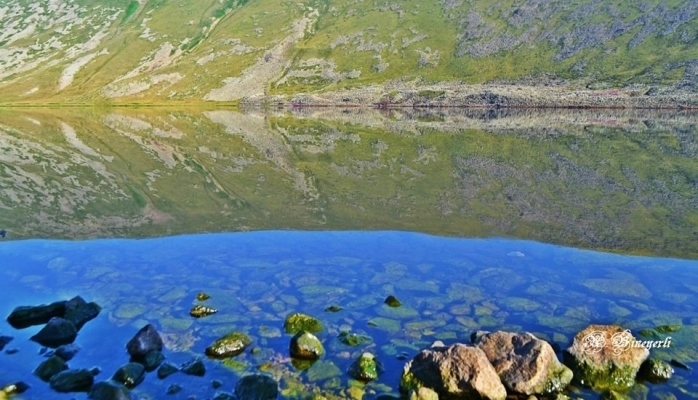
Qaragol Interrepublics State Reserve was set up with the decision of the Council of Ministers dated November17, 1987. Garagol State …

The idea of establishing Aghdam Bread Museum, which is considered to be the second in the world after the Zurich …
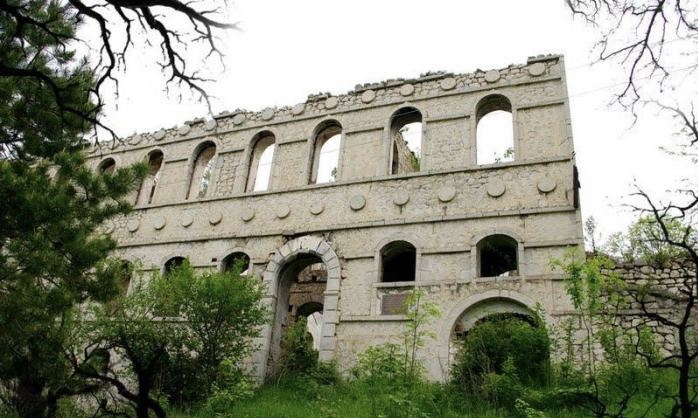
The Khurshudbanu Natavan’s House is a historical and architectural monument of the 18th century located in the city of Shusha. …

Museum Mausoleum Complex of Molla Panah Vagif is located in Shusha, Azerbaijan. It was built in honor of Molla Panah …
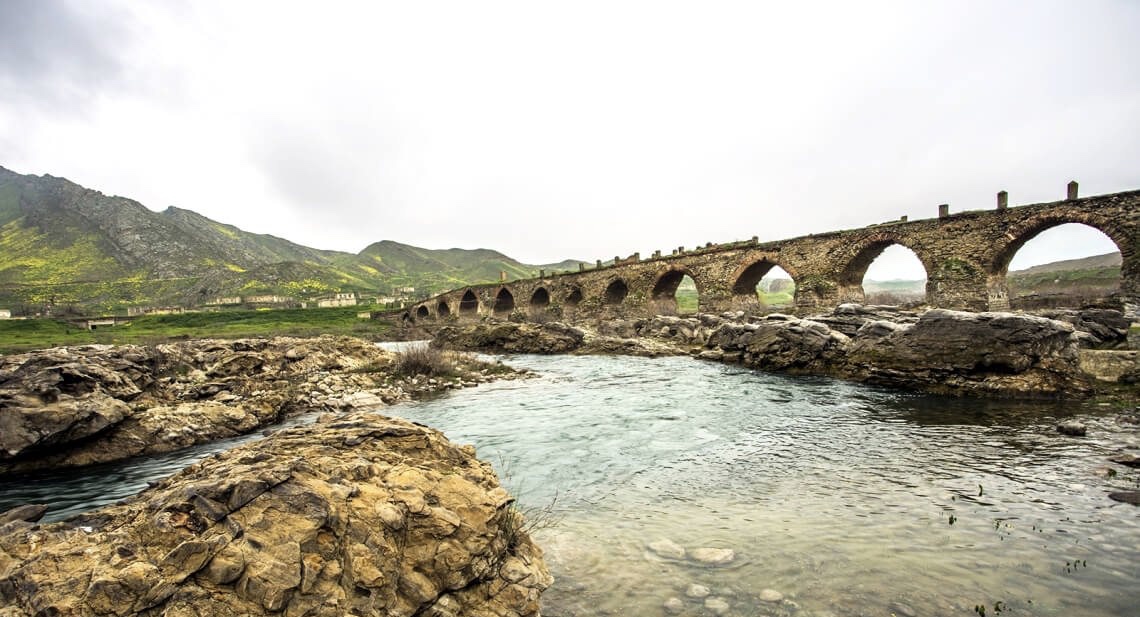
The Bridge belongs to the Arran architecture school. The first written source that mentioned the 15-arched Khudafarin Bridge belongs to …
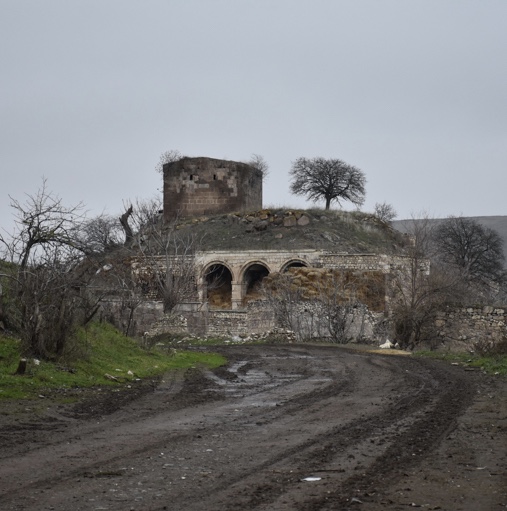
Garghabazar Caravanserai was built in 1681 at the hillside, in the center of Garghabazar village of Fuzuli district, 8 km …
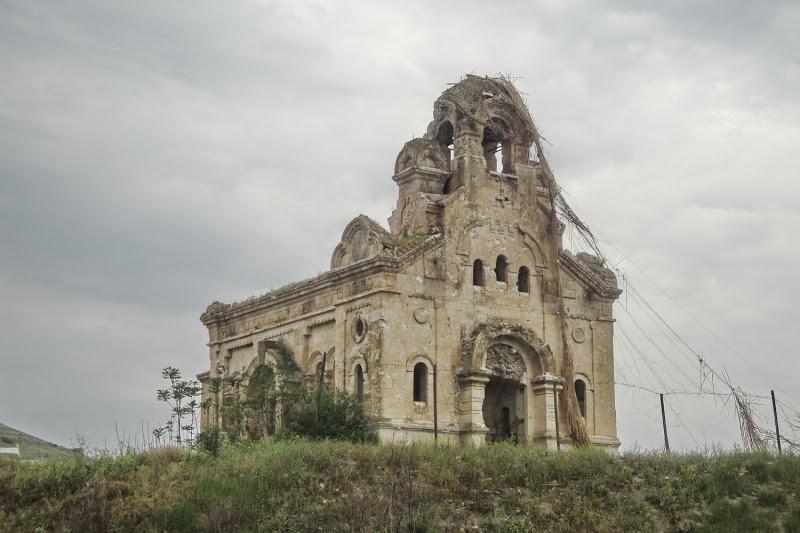
Armenia’s vandalism in Nagorno-Karabakh and seven surrounding regions affected not only the historical, cultural, and religious heritage of Islam but …

Jabrayil History-Ethnography Museum has been operating since 1953. Archaeological and ethnographic materials belonging to the history of the region, textiles, …

Khudavang, or Dedeveng, Monastery Complex is located in the Vang village of Kalbajar District, on the left bank of Tartar …

“The 19th century Aghdam Juma Mosque is perhaps the only structure that has withstood the years of neglect since the …